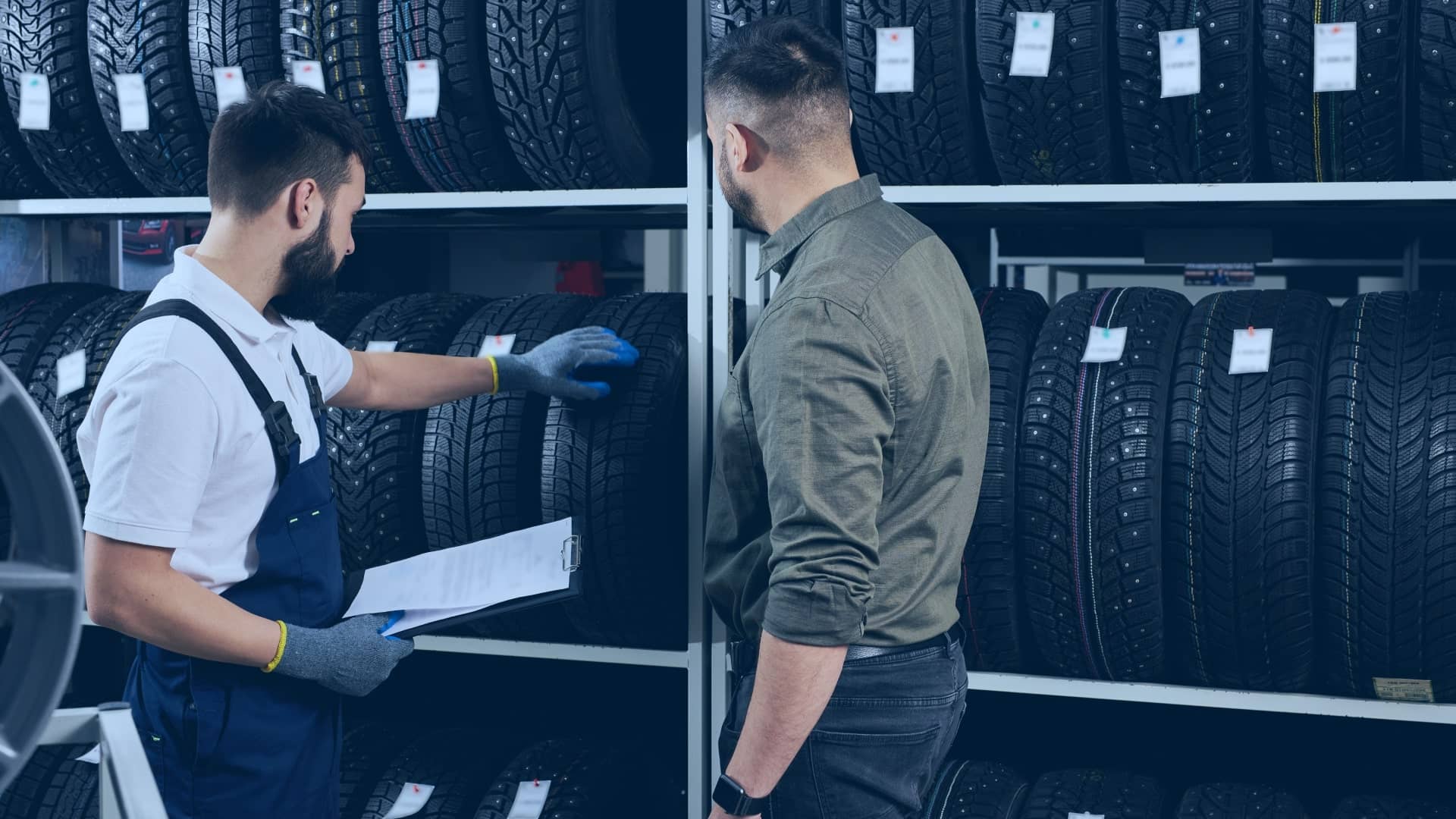In the evolving landscape of fleet management, tire inventory management software emerges as a pivotal tool, revolutionizing how fleets operate and maintain their vehicles. This blog delves into the essence of tire inventory management, its integration within fleet management software, and how fleet managers can leverage it for optimal efficiency and effectiveness. We’ll also explore the myriad benefits it brings to fleet operations, aligning closely with the cutting-edge tire monitoring features we offer.
Understanding Tire Inventory Management
Tire inventory management refers to the systematic approach to tracking, maintaining, and managing tires throughout their lifecycle in a fleet. It encompasses various aspects, including purchasing, storing, rotating, servicing, and eventually replacing tires. This management is crucial as tires are among the most significant expenses in fleet operations, not just in terms of cost but also in their impact on safety, fuel efficiency, and vehicle performance. The system encompasses several key functionalities:
Tracking and Monitoring:
The system keeps a detailed record of each tire in the fleet, including its type, size, purchase date, service history, and current condition. This tracking is essential for maintaining an overview of the fleet’s tire status and for planning maintenance and replacements.
Maintenance Scheduling:
Regular maintenance, such as tire rotations, pressure checks, and inspections for wear and tear, is crucial for extending the life of tires and ensuring vehicle safety. The tire inventory management system helps schedule these maintenance activities and alerts fleet managers when service is due.
Wear and Performance Analysis:
By monitoring tire wear and performance, the system can provide insights into when a tire is likely to need replacement. This predictive analysis helps in planning and budgeting for tire purchases, and in avoiding unexpected tire failures that can lead to downtime or accidents.
Cost Management:
One of the primary benefits of a tire inventory management system is the ability to control and reduce costs. By optimizing tire maintenance and replacement schedules, the system helps avoid unnecessary expenses related to premature tire wear or failures.
Safety Compliance:
Ensuring that tires are in good condition is not just a matter of efficiency and cost-saving but also a critical safety issue. A tire inventory management system helps fleet managers comply with safety standards and regulations by ensuring that all vehicles are equipped with tires that are safe and roadworthy.
Data Integration and Reporting:
These systems often integrate with other fleet management tools, allowing for comprehensive reporting and analytics. This integration provides a holistic view of fleet operations, including fuel consumption, tire costs, and maintenance schedules.
Inventory Management:
Beyond tracking the current tires in use, the system also manages the inventory of spare tires. This includes monitoring stock levels, determining optimal reorder points, and managing tire storage.
Integration in Fleet Management Software
Integrating tire inventory management into fleet management software provides a centralized platform for managers to monitor and control all aspects of tire management. This integration ensures real-time tracking of tire performance, wear and tear, and maintenance schedules. With advanced data analytics, fleet managers can predict tire lifecycles, optimize replacement times, and minimize downtime.
Efficient Use by Fleet Managers
Fleet managers can efficiently utilize tire inventory management software to gain a comprehensive view of their fleet’s tire status. This includes monitoring tire pressure, tread depth, and overall condition. By setting up alerts and maintenance schedules, managers can preemptively address tire issues, thereby reducing the likelihood of accidents and breakdowns. This proactive approach not only enhances safety but also optimizes the operational lifespan of each tire.
Key Features of Tire Inventory Management Software
Real-Time Tracking and Monitoring:
The software offers capabilities to track each tire’s status in real-time, including its location, condition, and performance metrics like tread depth and air pressure.
Automated Maintenance Scheduling:
It allows for the scheduling of regular maintenance activities such as rotations, balancing, and alignments, and sends automated reminders to ensure these tasks are completed on time.
Wear and Tear Analysis:
Advanced analytics tools within the software can predict the lifespan of each tire based on usage patterns and wear rates, helping to plan replacements in a timely and cost-effective manner.
Inventory Control:
The system manages the entire inventory of tires, including those in use and spare tires in stock, ensuring optimal levels are maintained and reducing the risk of shortages.
Cost Tracking and Budgeting:
It provides detailed insights into the costs associated with tire purchases, maintenance, and replacements, aiding in effective budgeting and cost control.
Integration with Fleet Management Systems:
The software seamlessly integrates with broader fleet management systems, allowing for a holistic view of fleet operations, including fuel management, vehicle maintenance, and driver performance.
Compliance and Reporting:
The system helps in maintaining compliance with safety and environmental regulations by ensuring tires meet legal standards. It also generates comprehensive reports for audit and analysis purposes.
Customizable Alerts and Notifications:
Fleet managers can set up custom alerts for critical issues like under-inflation or excessive wear, enabling prompt action to prevent breakdowns or accidents.
Core Benefits of Tire Inventory Management Software
Cost Reduction:
Effective tire management significantly lowers the costs associated with premature tire replacements and repairs. By extending tire life and optimizing purchasing, fleets can realize substantial savings.
Enhanced Safety:
Regular monitoring and maintenance of tires ensure that vehicles are always equipped with tires in optimal condition, thereby reducing the risk of tire-related accidents.
Improved Fuel Efficiency:
Well-maintained tires with correct pressure levels contribute to better fuel economy, reducing overall fuel costs for the fleet.
Data-Driven Decisions:
The software provides valuable insights into tire performance and wear patterns, enabling data-driven decision-making for tire purchases and maintenance.
Increased Productivity:
Minimizing downtime due to tire issues means vehicles spend more time on the road, enhancing overall fleet productivity.
Environmental Benefits:
Proper tire management leads to reduced tire waste and lower carbon emissions, contributing to environmental sustainability.
Compliance with Regulations:
Keeping tires in top condition helps fleets comply with safety and environmental regulations, avoiding penalties and legal issues.
Connecting to Our Tire Monitoring Features
Our tire monitoring features seamlessly integrate with the tire inventory management software, offering real-time data on tire conditions and performance. This synergy allows fleet managers to make informed decisions swiftly, ensuring their fleets operate at peak efficiency. Our system’s precision and reliability in monitoring tire health align perfectly with the proactive maintenance approach advocated in modern fleet management.
Conclusion
Tire inventory management software is an indispensable tool for modern fleet operations. It offers myriad benefits, from cost savings and safety enhancements to environmental responsibility. As fleet management continues to evolve, embracing such technologies will be key to staying competitive and efficient. Our tire monitoring features, in conjunction with this software, provide a comprehensive solution for tire management. It ensures fleets are well-equipped for the challenges of today and tomorrow.



